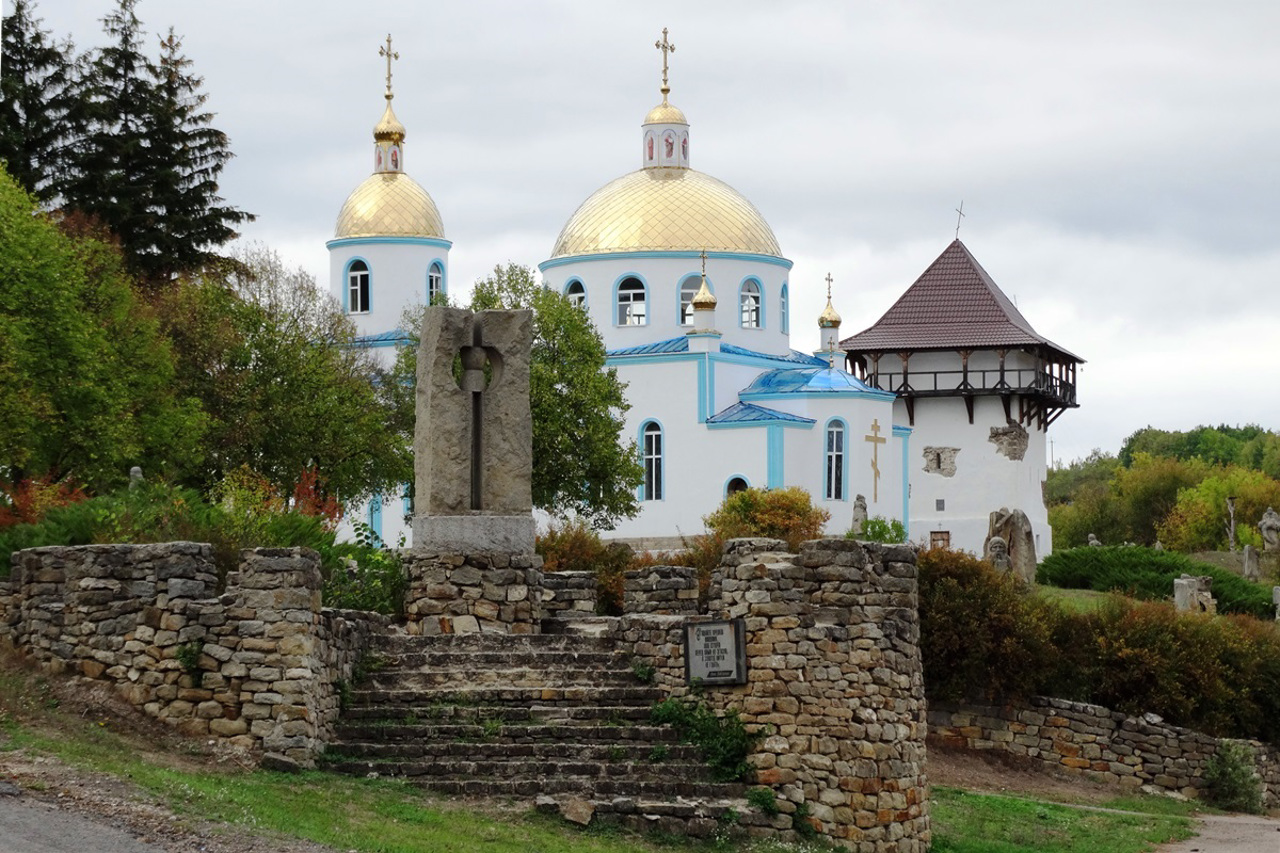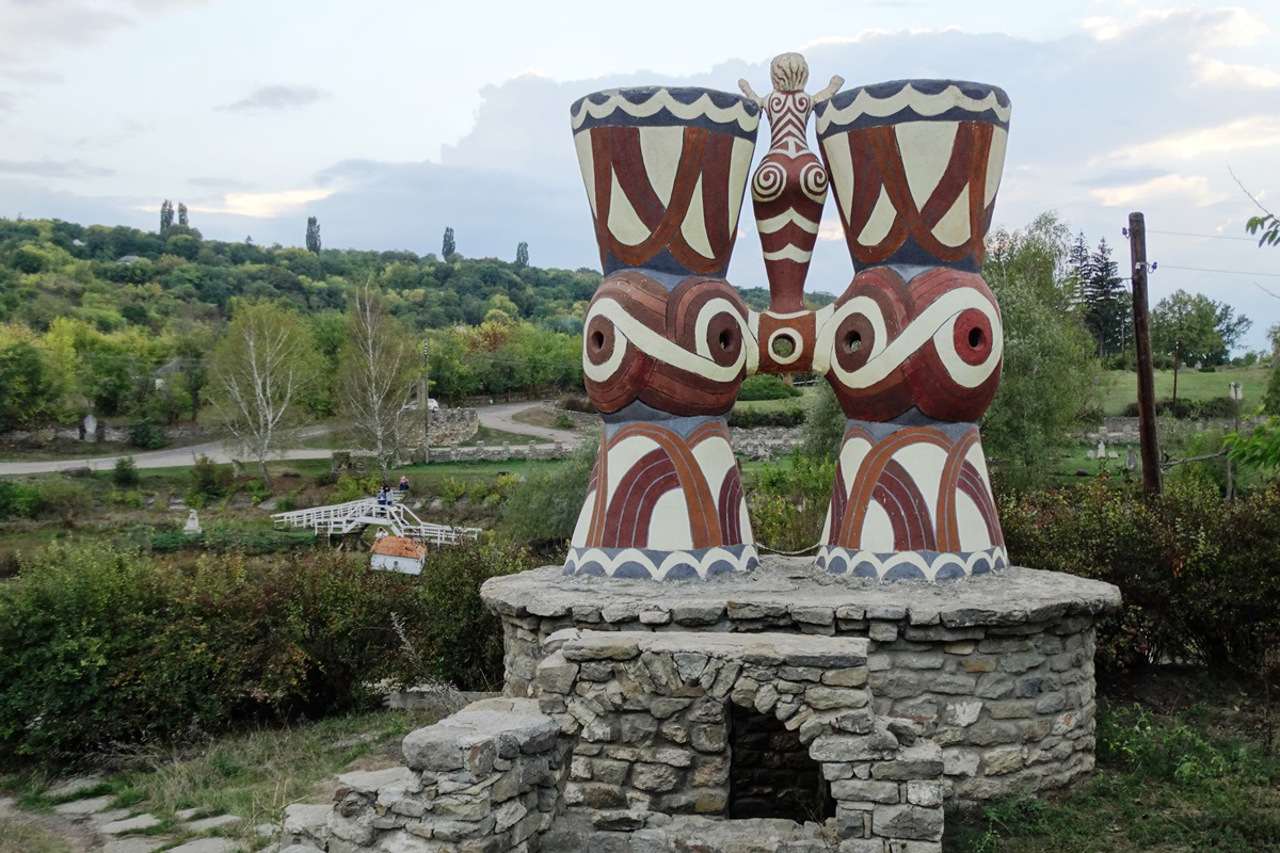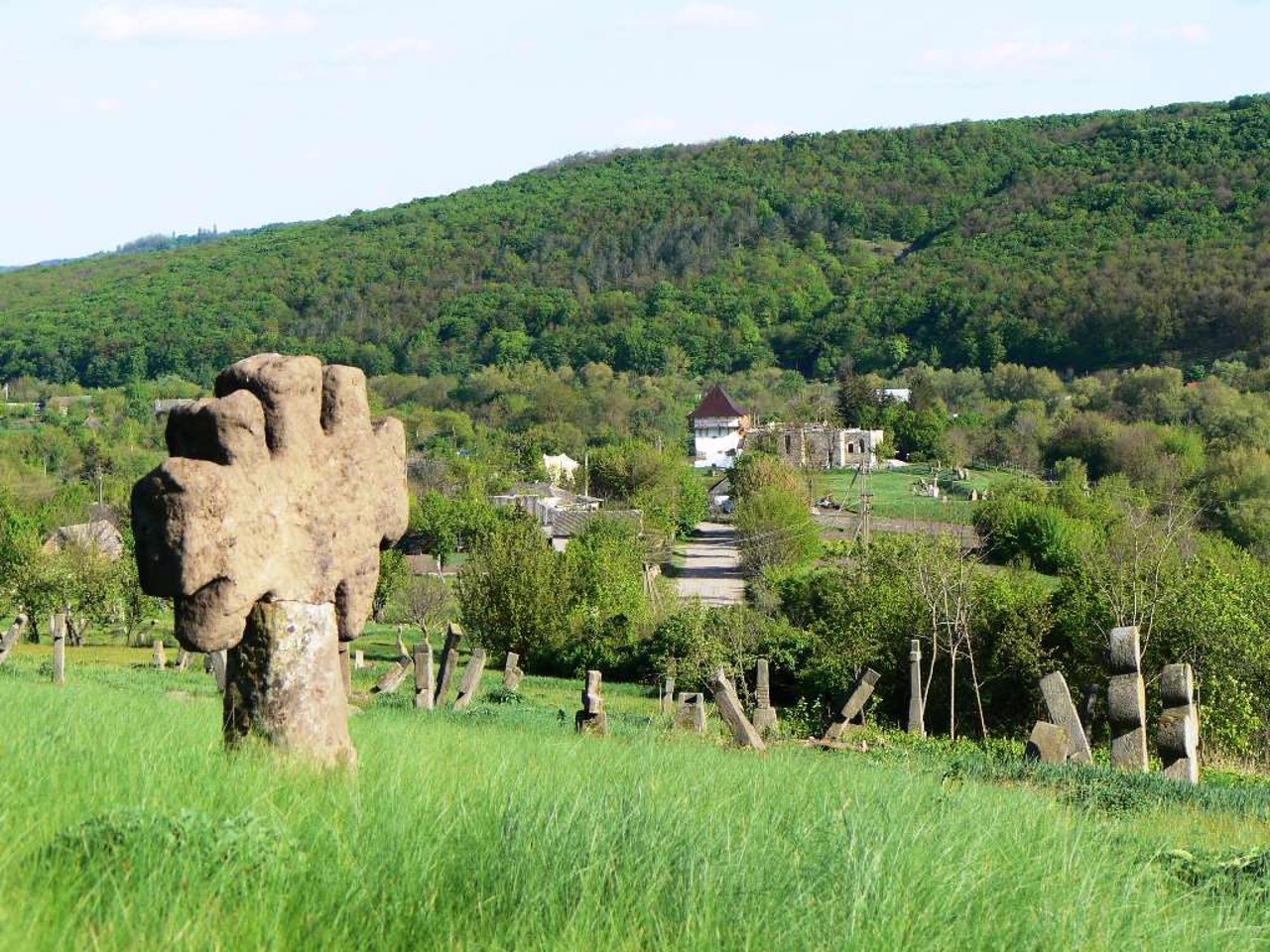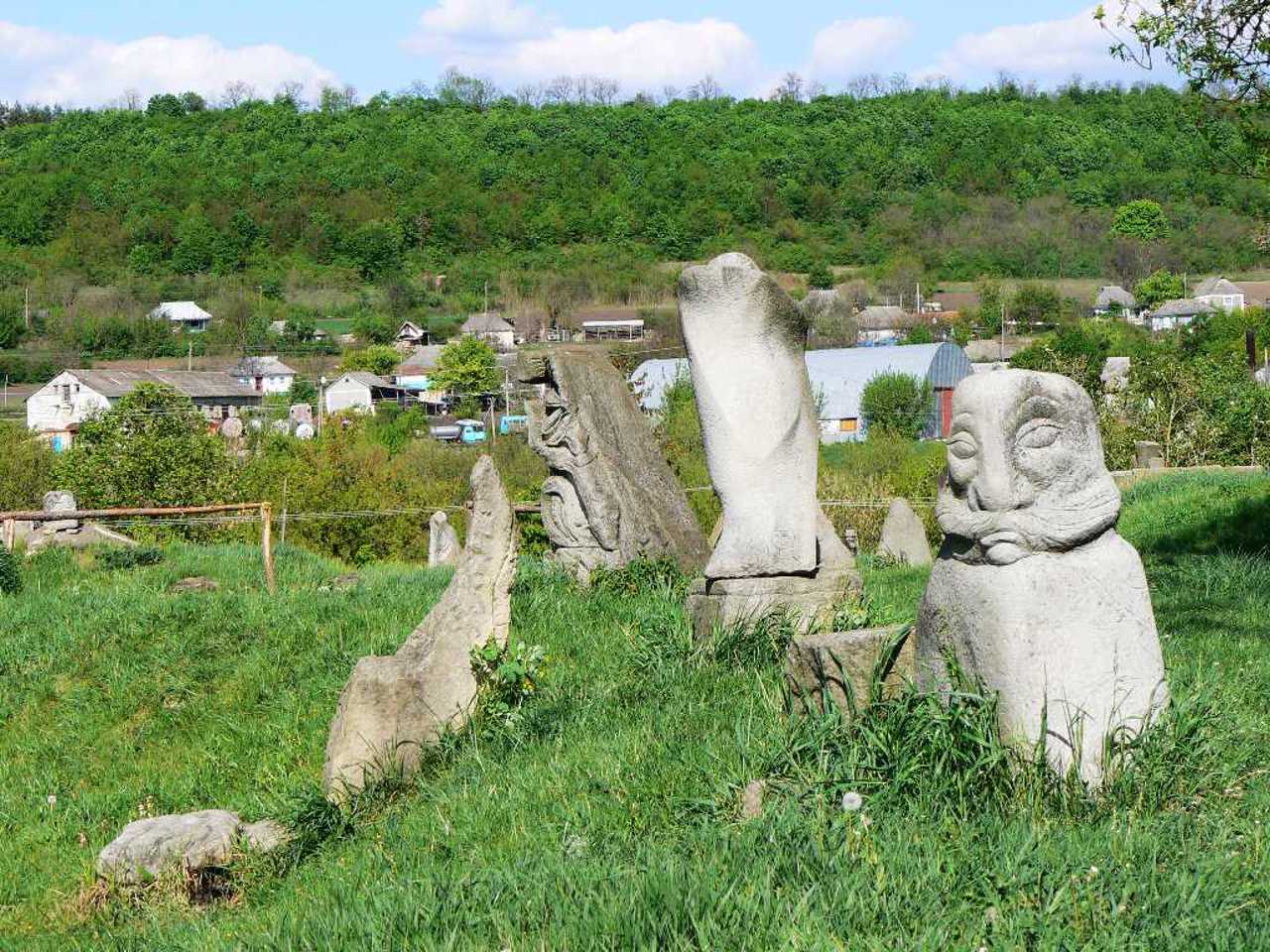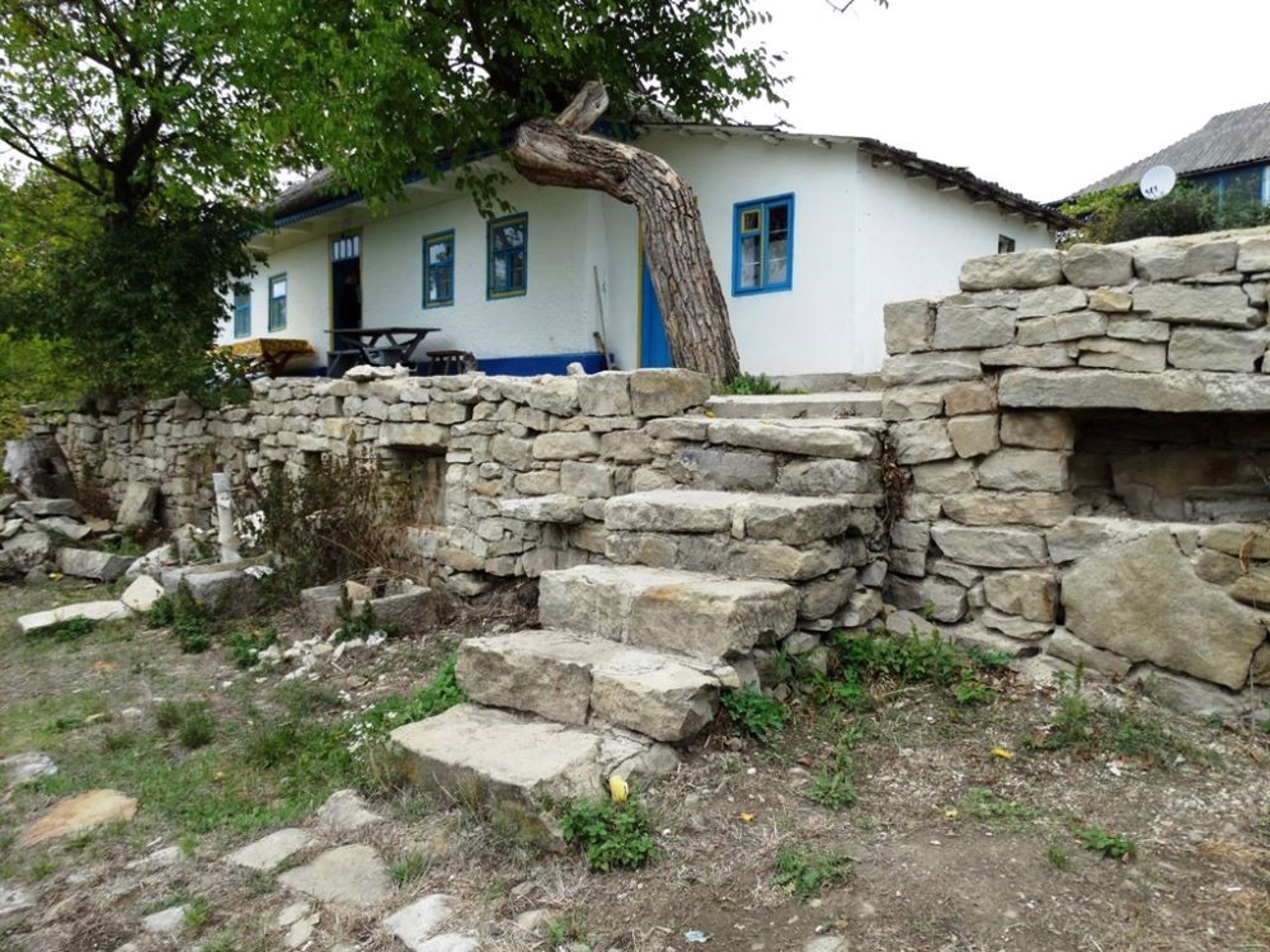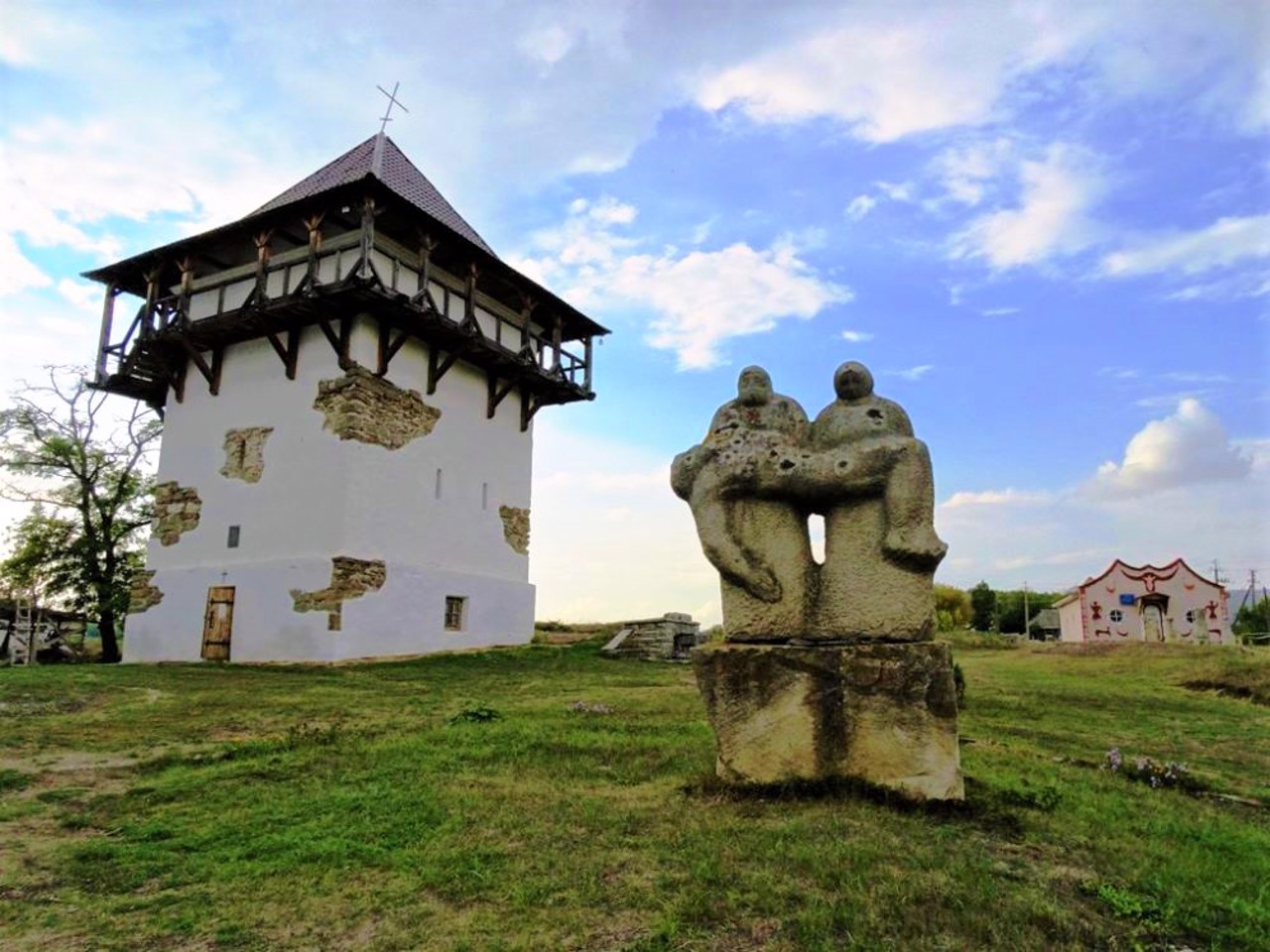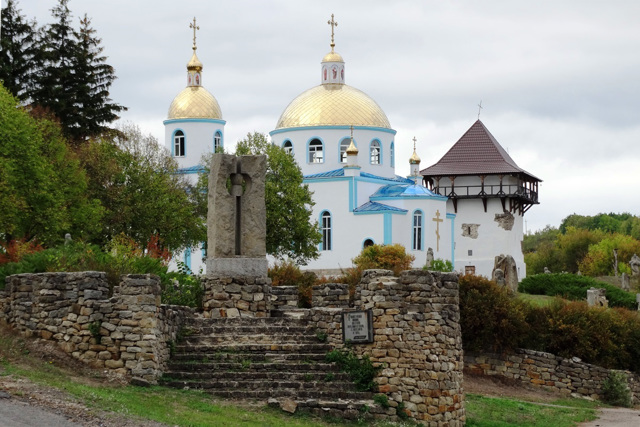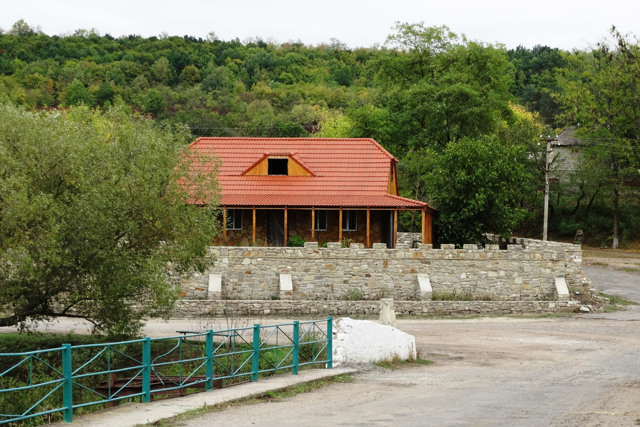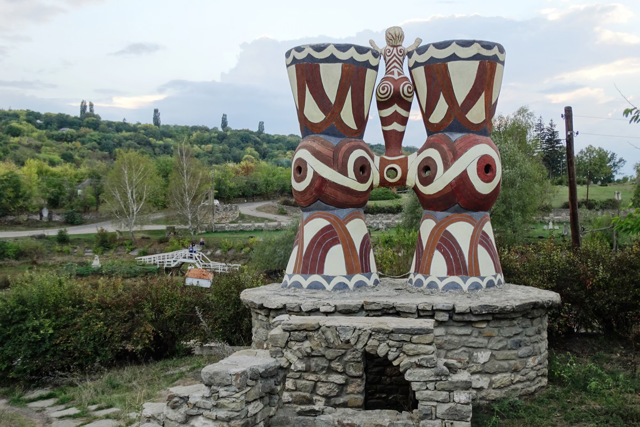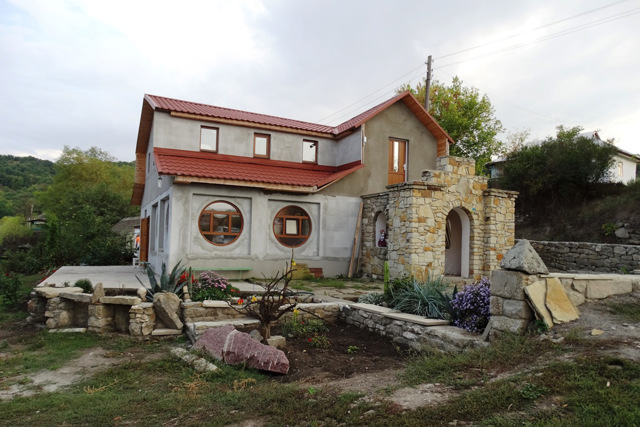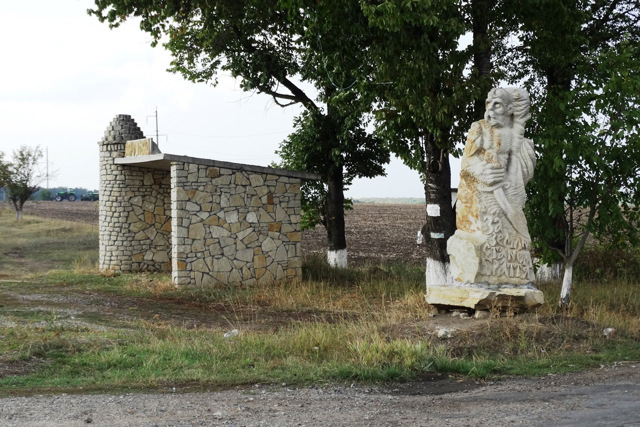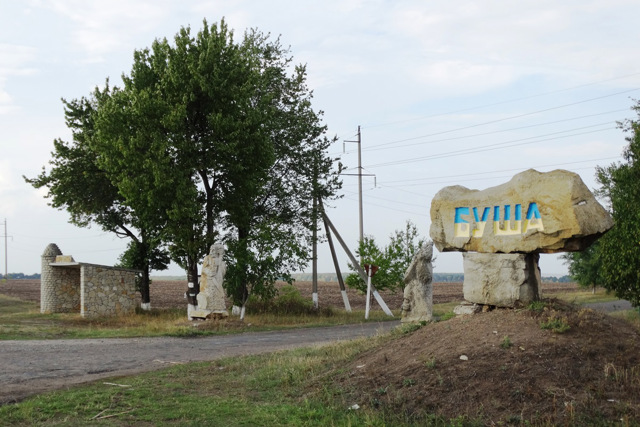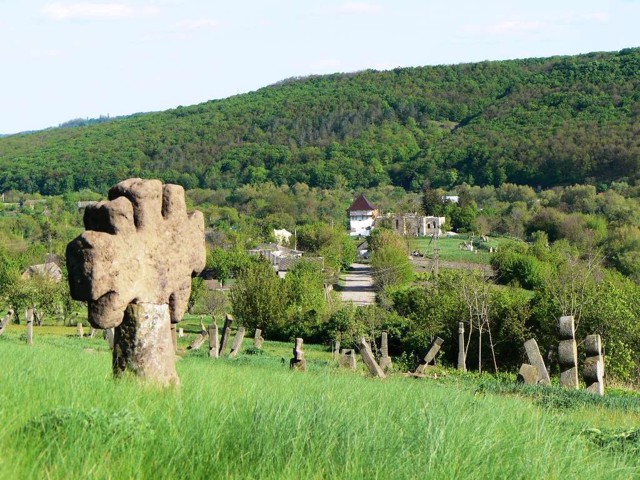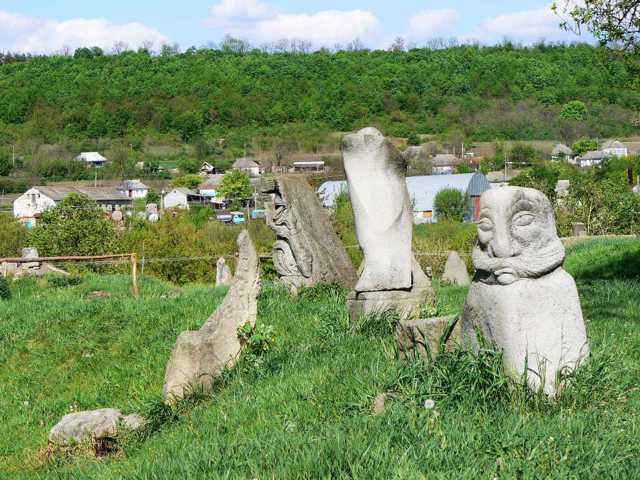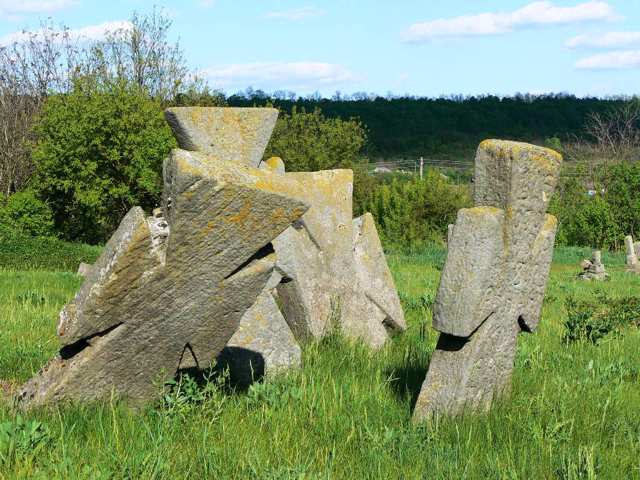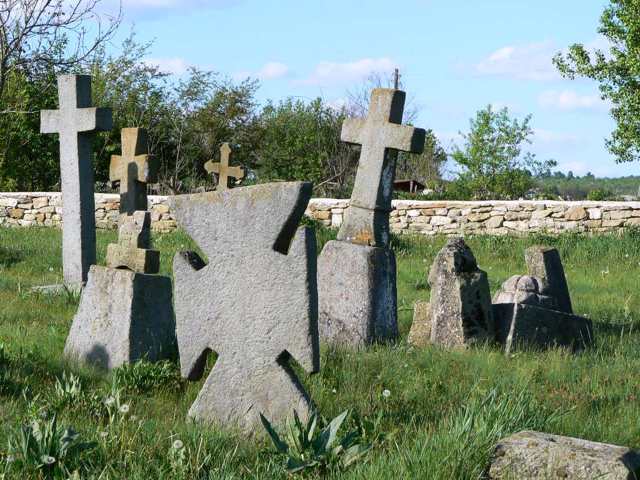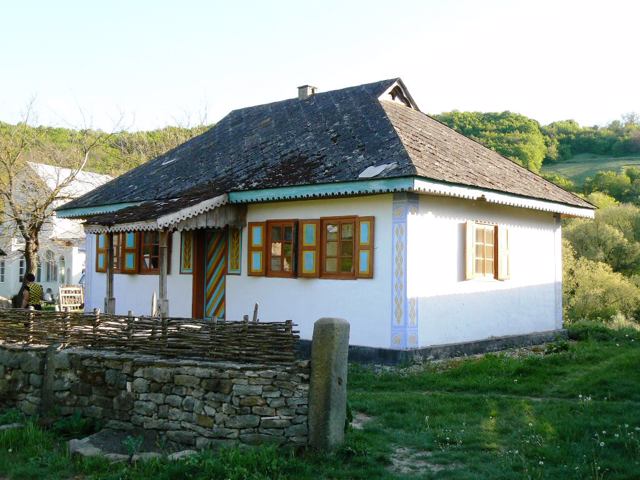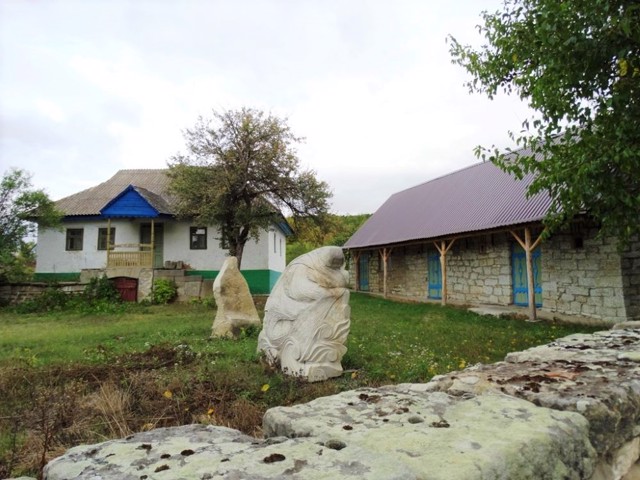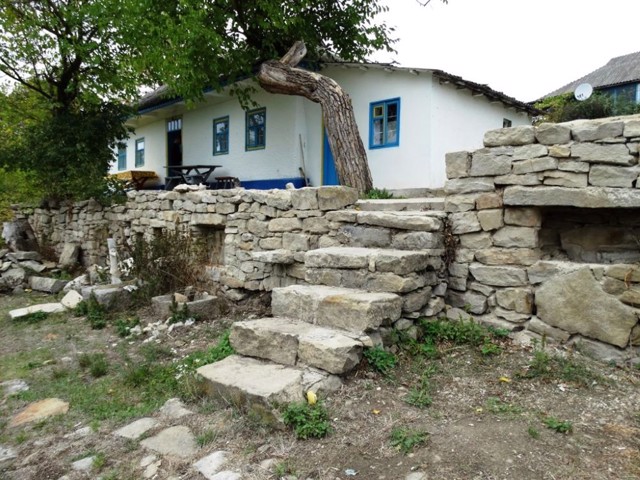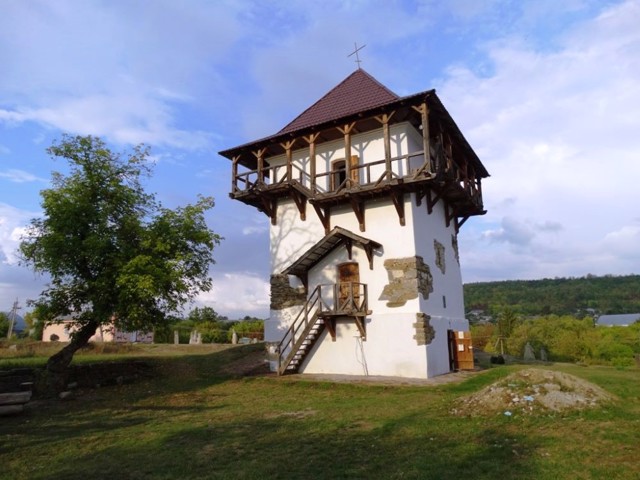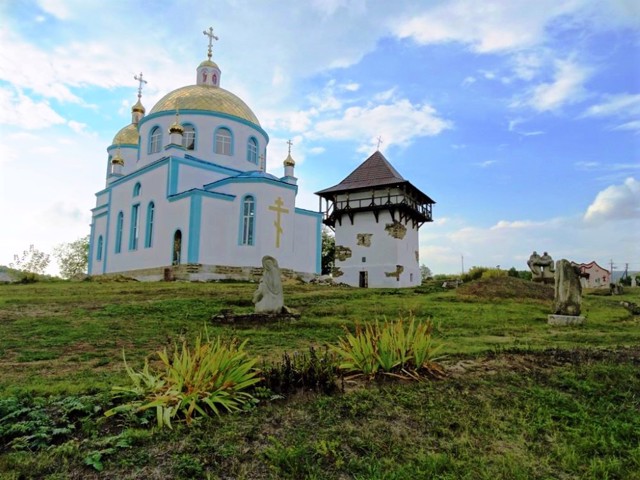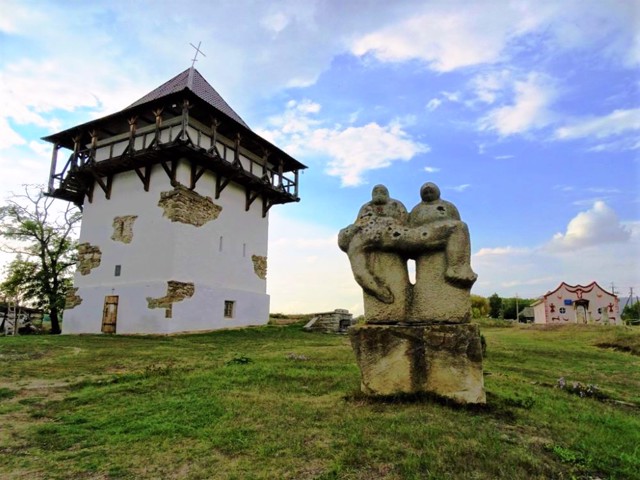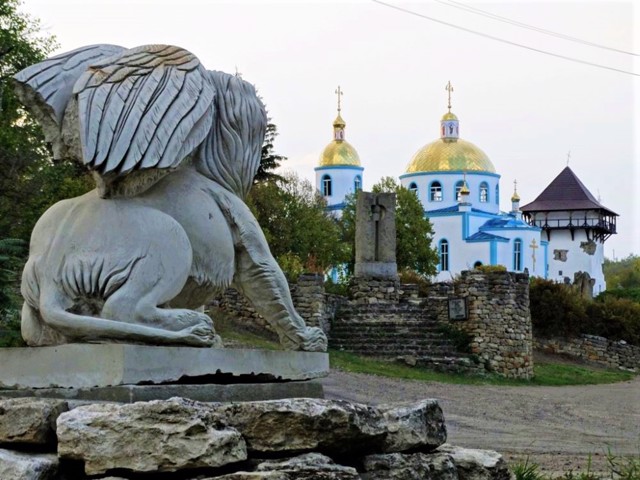Functional temporarily unavailable
General information about Busha
The picturesque village Busha is located near the confluence of the Murafa and Bushanka rivers in the southern part of Vinnytsia region. Thanks to the combination of beautiful nature, expressive relief, ancient history and ancient legends, Busha has become a real mecca for artists and esotericists. It is considered a "place of strength".
On the territory of the village, tools of the Trypillia culture, ceramics of the Chernyakhiv culture and other evidence of the existence of the settlement for several millennia were discovered.
A pagan cave temple has been preserved since pre-Christian times. According to legend, in the 12th-13th centuries there was an ancient Rus city of Krasnopil (Antopil), ...
The picturesque village Busha is located near the confluence of the Murafa and Bushanka rivers in the southern part of Vinnytsia region. Thanks to the combination of beautiful nature, expressive relief, ancient history and ancient legends, Busha has become a real mecca for artists and esotericists. It is considered a "place of strength".
On the territory of the village, tools of the Trypillia culture, ceramics of the Chernyakhiv culture and other evidence of the existence of the settlement for several millennia were discovered.
A pagan cave temple has been preserved since pre-Christian times. According to legend, in the 12th-13th centuries there was an ancient Rus city of Krasnopil (Antopil), which was part of the Halicia-Volyn principality, then destroyed by the Tatars. Folk legend connects the name of the new settlement with the name of the only surviving resident - Bashi (Busha): "Busha - one soul left".
In the 15th century, the great Lithuanian prince Vytautas gave the settlement to the Bushynsky family. In the second half of the 16th century, the Crown Hetman Jan Zamoyski began the construction of a new castle. As part of Poland, the city played the role of a border fortress and was often subjected to Tatar raids (during one of them in 1524, the population was almost completely destroyed). In 1648, Busha was occupied by Bohdan Khmelnytskyi, and only 6 years later, Polish troops stormed the city. The last defenders of the fortress blew up the powder cellars, dying along with part of the attackers. The castle has not been restored since then, the town has lost its importance and is now a small village.
In 2000, the State Historical and Cultural Reserve "Busha" was created. Historical and architectural monuments are being restored. There are several museums.
Every year in August, a plein-air exhibition of master stonemasons "Podillia Charm" is held, whose numerous works decorate the entire village. Plein-air exhibitions of potters and artists are also held. Christmas and the feast of Ivan Kupala are brightly celebrated in the village.
Many rural houses are converted to receive guests with all amenities, thanks to which rural green tourism is developing.
Мальовниче село Буша розташоване біля злиття річок Мурафа і Бушанка в південній частині Вінницької області. Завдяки поєднанню гарної природи, виразного рельєфу, давньої історії та старовинних легенд Буша стала справжньою меккою для митців та езотериків. Його вважають "місцем сили".
На території села виявлені знаряддя трипільської культури, кераміка черняхівської культури та інші свідоцтва існування поселення протягом декількох тисячоліть.
З дохристиянських часів зберігся язичницький печерний храм. За легендою, в ХІІ-ХІІІ сторіччях тут було давньоруське місто Краснопіль (Антопіль), яке входило до складу Галицько-Волинського князівства, потім зруйноване татарами. Назву нового поселення народний перек ...
Мальовниче село Буша розташоване біля злиття річок Мурафа і Бушанка в південній частині Вінницької області. Завдяки поєднанню гарної природи, виразного рельєфу, давньої історії та старовинних легенд Буша стала справжньою меккою для митців та езотериків. Його вважають "місцем сили".
На території села виявлені знаряддя трипільської культури, кераміка черняхівської культури та інші свідоцтва існування поселення протягом декількох тисячоліть.
З дохристиянських часів зберігся язичницький печерний храм. За легендою, в ХІІ-ХІІІ сторіччях тут було давньоруське місто Краснопіль (Антопіль), яке входило до складу Галицько-Волинського князівства, потім зруйноване татарами. Назву нового поселення народний переказ пов'язує з ім'ям єдиної мешканки, що залишилася в живих – Басі (Буші): "Буша – залишилася одна душа".
В XV столітті великий литовський князь Вітовт віддав поселення роду Бушинських. У другій половині XVI століття коронний гетьман Ян Замойський почав будівництво нового замку. В складі Польщі місто грало роль прикордонної фортеці і часто піддавалося набігам татар (під час одного з них в 1524 році населення було майже повністю знищено). В 1648 році Бушу зайняв Богдан Хмельницький, і лише через 6 років польські війська взяли місто приступом. Останні захисники фортеці підірвали порохові льохи, загинувши разом з частиною нападників. Замок з тих пір не відновлювався, місто втратило значення і зараз є невеличким селом.
В 2000 році створено Державний історико-культурний заповідник "Буша". Ведеться реставрація пам'яток історії та архітектури. Працюють кілька музеїв.
Щорічно в серпні проходить пленер майстрів-каменотесів "Подільський оберіг", численними роботами яких прикрашено все село. Також проводяться пленери гончарів і художників. В селі яскраво відзначають Різдво та свято Івана Купала.
Багато сільських хат переобладнується для прийому гостей з усіма зручностями, завдяки чому розвивається сільський зелений туризм.
Сплануй своє перебування у Busha
What to see and where to go in Busha
Tourist attractions and museums of Busha
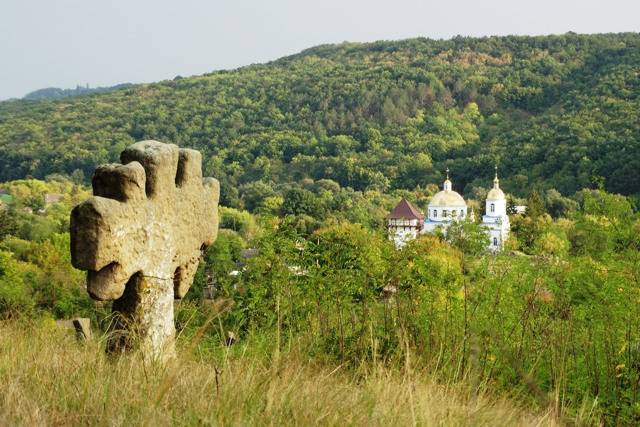
State Historical and Cultural Reserve "Busha"
Historic area , Museum / gallery , Archaeological site
The State Historical and Cultural Reserve "Busha" was created in 2000 on the territory of the ancient Podillya village of Busha, located between Yampil and Mohyliv-Podilskyi. The reserve unites a whole complex of natural, archaeological, historical and cultural monuments of Eastern Podillya.
The reserve welcomes its guests with the largest open-air museum of historical sculptures in Europe, where international plein-air exhibitions of stonemason sculptors are held annually. In total, on the territory of the village, you can see about two hundred works of stone and granite on various subjects.
The key object of the reserve is Zamkova hill with the remains of the Busha Castle from Cossack times and underground passages of the 16th-17th centuries, which is a monument of cultural heritage of national importance. Remains of the settlement of the Trypllia culture were also found on the castle - a protective pavilion was built over the excavation, and the archaeological museum operates. On the slope of the mountain above the fortress there is a medieval cemetery where Cossack crosses from the 18th century have been preserved. An archaeological monument of national importance is also a cave temple of the V-XVII centuries with relief images.
The reserve includes the Ethnographic Museum, the Art Museum and the Weaving Museum. An interesting natural location is the "Haidamatsky ravine" with huge sandstone rocks in the forest massif.
The administration of the "Busha" reserve is located opposite the castle. Here you can buy tickets to the museum and order tours of the territory of the reserve. Also, in the premises of the administration, exhibitions are constantly held, master classes on baking ceremonial bread are held.
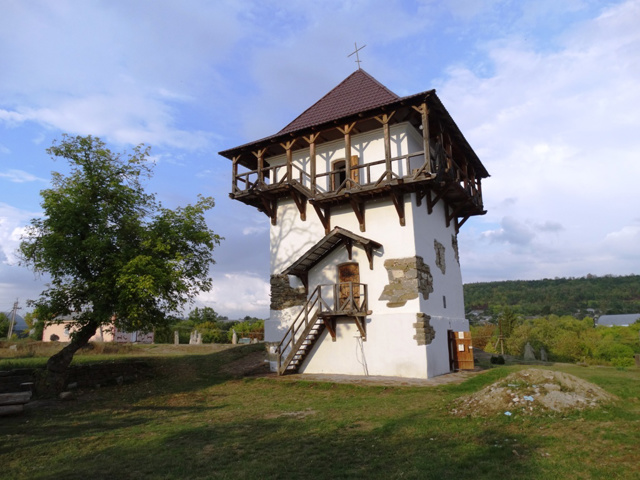
Busha Castle
Castle / fortress , Architecture , Museum / gallery
The border Busha Castle on the south-eastern border of the Polish-Lithuanian Commonwealth was built in the second half of the 16th century by crown hetman Jan Zamoyski. But it went down in history as a heroic Cossack fortress.
The castle was located on a promontory formed by the rivers Murafa and Bushanka. 4 corner castle towers were connected by underground passages. Each of the towers had its own powder cellar. Two more stone towers were part of the system of external wooden fortifications.
The castle was often attacked by Tatars. In 1617, Hetman Stanislav Zholkevskyi signed a peace treaty with the Turkish general Iskander Pasha, suspending the Polish-Turkish war for several years. In 1648 Bohdan Khmelnytsky subordinated the city to the Bratslav Regiment, the fortress was occupied by Cossack troops.
In 1654 the castle was besieged by Polish troops. According to legend, the last stage of the defense was led by the widow of Captain Dependent Maryana. When enemies stormed the city, she set fire to gunpowder cellars, destroying the fortress with an explosion along with enemies who captured it.
Only one of the fortress towers has survived, which was rebuilt in 1756 on the bell tower of the nearby Saint Michael's Church (destroyed in Soviet times). The tower has been restored, for the period of reconstruction of the church it is used as a temple.
In 2000, the Busha State Historical and Cultural Reserve was established, and archaeological research is being conducted. The Busha Defense Museum is located on the upper tier of the tower, a pavilion of Trypillya culture was opened on the territory of the castle, and an exhibition of modern sculpture was organized.
On the site of the upper settlement there is a Cossack cemetery of the XVIII-XIX centuries with massive stone crosses of various shapes.

Cave Church
Historic area , Temple , Museum / gallery , Natural object
The pre-Christian cave church in Bushа was opened by Professor Antonovych in 1883.
He discovered here a unique rock relief depicting the Peace Tree, a rooster, a deer, and a kneeling man. A mysterious rectangle is carved above these figures, which previously contained the inscription "Azm esm Miroboh priest Olhov" (now the inscription is not visible).
Various researchers date the Bushan relief to different historical periods - from the II to the XII century, and some date it to the XVI century. Perhaps the cave was used as a Christian temple. Medieval inscriptions indicate that Catholic monks lived in the cave.
In 1824, local nobleman Romuald Ovsyanyi found and explored the cave, making an inscription: "In memory of 1524. June 3. R. O." (on this day Busha was destroyed by the Tatars).
Currently, the Cave Church is part of the State Historical and Cultural Reserve "Busha". To visit, it is necessary to contact the administration of the reserve.
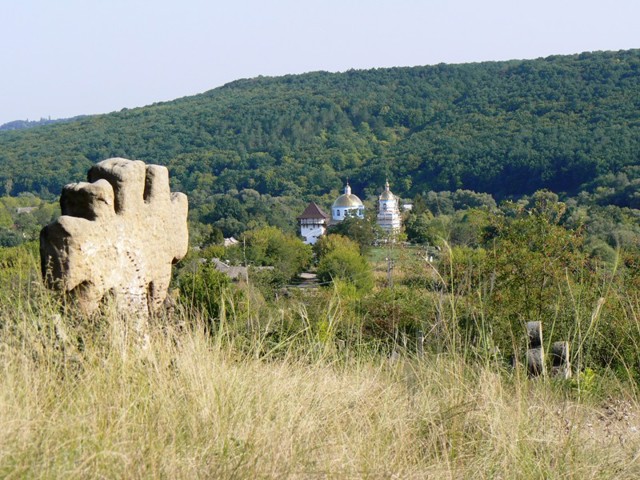
Cossack Cemetery
Historic area
The old Cossack cemetery in Bushа is located on a mountain that rises above the Busha castle, on the territory of the State Historical and Cultural Reserve "Busha". In the lower part of the cemetery there are graves from the 19th century, in the upper part there are more ancient ones, probably up to the 17th century.
Here you can see many massive stone Cossack crosses of various shapes. They are made from local sandstone, large deposits of which exist in the surrounding area. Among the tombstones there are Cossack crosses of the Maltese type with a circle in the middle, crosses in the form of “clubs”, even more complex in shape - with additional crossbars on the crossbars.
The best panorama of Busha opens from the Cossack cemetery, which is especially expressive in the light of sunset.
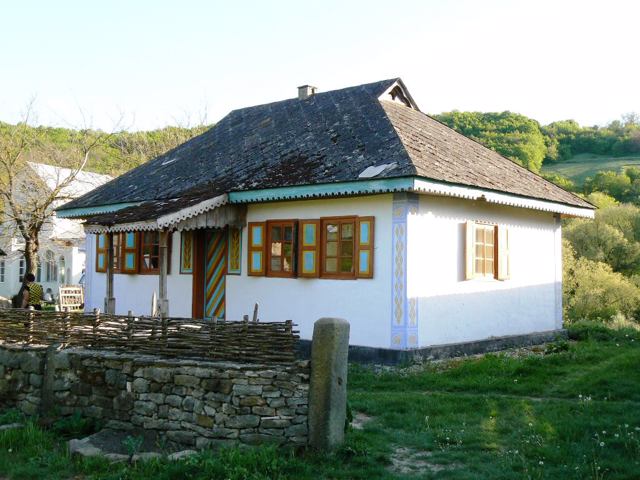
Ethnography Museum
Museum / gallery
The "Podillya Hut" Ethnography Museum is housed in an ancient 130-year-old house in the center of the village of Busha, next to Castle Hill. The museum was opened in 2004.
Tools, dishes, clothes, towels, a chest, a baby cradle, paintings, icons and other items of rural life, collected in the surrounding villages, are presented.
A model of a medieval castle and city fortifications is displayed in the yard.
To visit, you need to contact the administration of the State Historical and Cultural Reserve "Busha".
Reviews Busha
Geographical information about Busha
| {{itemKey}} | {{itemValue}} |
|---|---|
| Region |
Vinnytsia |
